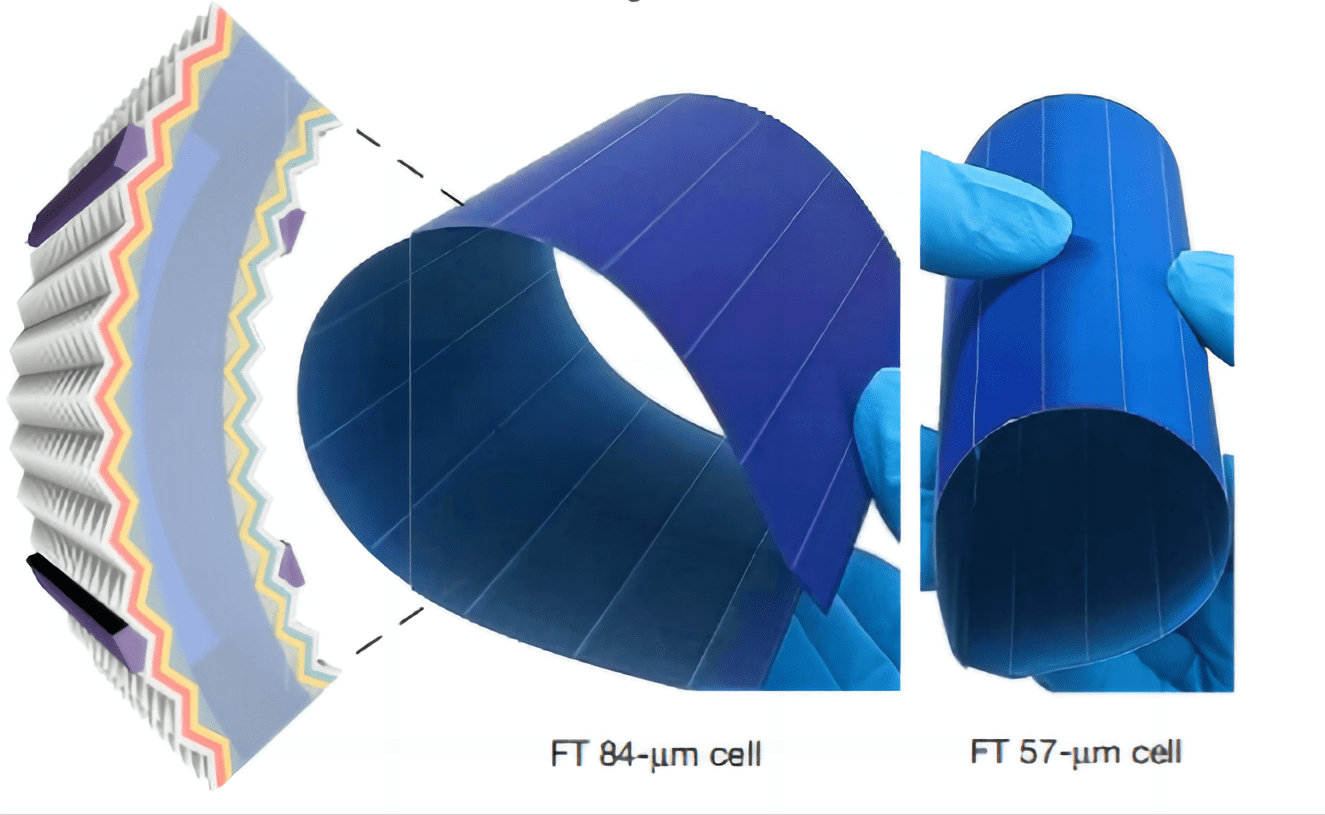Solar Cells Thinner than Paper

Flexible silicon solar cells with high power-to-weight ratios. (PHOTO: LONGI)
Silicon-based solar cells that are paper thin,?more flexible, and more efficient, have been unveiled by researchers from Jiangsu University of Science and Technology, in collaboration with LONGI, a green energy company.
Currently, the thickness of such?silicon cells is generally 150?μm?to 180 μm, which makes them difficult to apply to scenarios?requiring flexibility or strict weight limits,?such as curved roofs, floating solar panels or aerospace applications.
According to a paper published in Nature, a combined approach that can improve the power conversion efficiency of silicon heterojunction solar cells and render them flexible at the same time has been developed by scientists.
Notably, the 57μm thick solar cell stands out with a power-to-weight ratio of 1.9 watts per gram and a curvature radius of 19 millimeters, surpassing existing products by 2 to 3 times.
Now, we have reduced the thickness of silicon wafers to less than 100 μm, which is thinner than an A4 sheet of printing paper, making up for the major shortcomings of silicon cells. In the future, our team will continue to develop more flexible, lightweight, low-cost and highly efficient solar cells that can be as portable as film, said the paper’s first author Li Yang.







